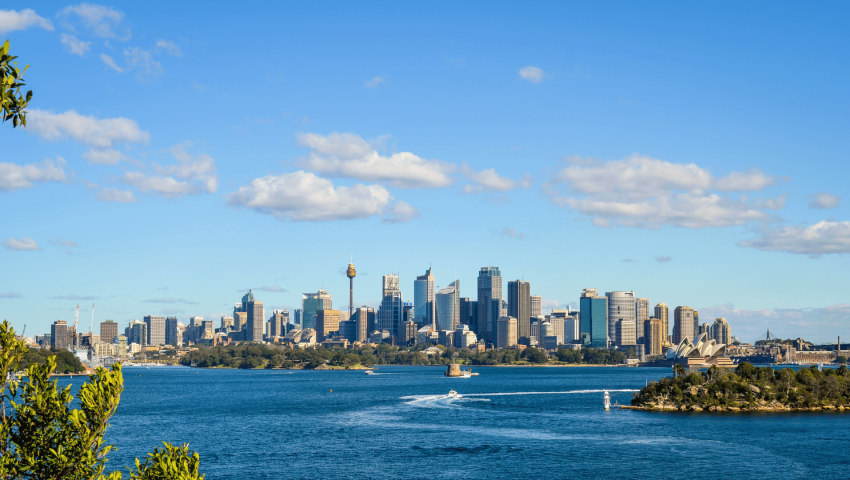
Processing Time Updates by Visa Type
“Understanding current visa processing times is crucial for planning your Australian immigration journey, with timely preparation being as essential as having the right documentation.”
Australian Visa Processing Times 2025: Latest Updates & Waiting Period Strategies
Understanding current visa processing times is crucial for anyone planning their Australian immigration journey. With the Department of Home Affairs continuously adjusting its operations in response to global factors and policy changes, staying informed about the latest processing timelines can significantly impact your immigration strategy. This comprehensive guide examines the most recent updates to Australian visa processing times as of April 2025, breaking down waiting periods by visa type and offering expert strategies to navigate potential delays. At Visa Green, we understand the stress and uncertainty that waiting periods can cause, which is why our Melbourne-based immigration lawyers provide personalised support to help clients manage expectations and optimise their applications for more efficient processing.
The Australian immigration landscape has undergone substantial changes following the post-pandemic recovery period and recent policy reforms implemented in early 2025. The Department of Home Affairs has restructured its processing priorities and introduced new technological systems aimed at streamlining application assessments. These changes have resulted in significant shifts in processing timeframes across various visa categories.
Current processing times reflect the Department's focus on economic recovery, with priority given to certain skilled visa categories and employer-sponsored applications that address critical skills shortages. Family stream visas have also seen adjustments in processing priorities, with notable changes to Partner visa assessment procedures.
According to the Department's latest quarterly report, overall visa processing efficiency has improved by approximately 18% compared to late 2024, though individual visa categories show varying results. Regional visa applications continue to receive expedited processing as part of the government's ongoing commitment to regional development initiatives.
It's important to note that published processing times represent the period between application lodgement and final decision for 75% and 90% of applications. Individual cases may fall outside these timeframes depending on various factors including application complexity, documentation completeness, and additional verification requirements.
Current Processing Times by Visa Category (April 2025)
Understanding the current processing times for different visa categories can help you plan your immigration journey more effectively. Below, we've compiled the latest processing timeframes for major visa categories based on official Department of Home Affairs data as of April 2025.
Skilled Migration Visas
| Visa Subclass | Description | 75% of Applications | 90% of Applications | Change from 2024 |
|---|---|---|---|---|
| 189 | Skilled Independent | 9-11 months | 13-15 months | ↓ 2 months |
| 190 | Skilled Nominated | 8-10 months | 12-14 months | ↓ 1 month |
| 491 | Skilled Work Regional (Provisional) | 7-9 months | 11-13 months | ↓ 3 months |
| 482 | Temporary Skill Shortage (Short-Term) | 4-6 weeks | 2-3 months | ↓ 2 weeks |
| 482 | Temporary Skill Shortage (Medium-Term) | 6-8 weeks | 3-4 months | ↔ No change |
| 186 | Employer Nomination Scheme | 5-7 months | 8-10 months | ↓ 1 month |
| 494 | Skilled Employer Sponsored Regional | 4-6 months | 7-9 months | ↓ 2 months |
Key changes in skilled visa processing include enhanced automated assessment for points-tested visas, continued priority for regional skilled visas, more efficient employer-sponsored pathway processing due to the new employer verification system, and occupation-based prioritisation for healthcare, technology, and engineering roles.
Family and Partner Visas
| Visa Subclass | Description | 75% of Applications | 90% of Applications | Change from 2024 |
|---|---|---|---|---|
| 309/100 | Partner (Provisional and Permanent) | 14-17 months | 20-24 months | ↔ No change |
| 820/801 | Partner (Provisional and Permanent) | 18-22 months | 24-28 months | ↑ 2 months |
| 300 | Prospective Marriage | 14-16 months | 18-22 months | ↓ 1 month |
| 870 | Sponsored Parent (Temporary) | 5-7 months | 8-10 months | ↑ 1 month |
| 103 | Parent | 30+ months | 40+ months | ↑ 3 months |
| 143 | Contributory Parent | 18-24 months | 27-32 months | ↔ No change |
Common Processing Delays: Challenges and Solutions
Despite the Department's efforts to streamline visa processing, certain factors commonly contribute to application delays. Understanding these challenges can help you develop strategies to minimise waiting periods.
- Incomplete Documentation:
- Submitting applications with missing or inadequate supporting evidence remains one of the primary causes of processing delays.
- The Department often needs to request additional information, which can add weeks or months to processing times.
- Character and Health Assessment Complexities:
- Applications requiring additional character checks or complex health assessments typically experience longer processing times.
- This is particularly relevant for applicants with previous visa refusals, health conditions, or those from countries requiring additional security checks.
- Relationship Verification for Partner Visas:
- Partner visa applications often face extended assessment periods due to the detailed investigation of relationship evidence.
- This is especially true for relationships of shorter duration or with complex circumstances.
- Changes in Personal Circumstances:
- Significant changes during the application process – such as employment changes, relationship status updates, or relocation – can lead to reassessment requirements.
- Notifying the Department promptly of any changes is essential to minimize associated delays.
- Peak Application Periods:
- Seasonal fluctuations in application volumes can impact processing times, particularly for student and visitor visas.
- Strategic timing of applications can help avoid these peak periods where possible.

Visa Green's Expert Processing Strategies
Our Melbourne-based immigration specialists have developed effective strategies to help clients navigate processing challenges and minimize delays for their Australian visa applications.
- Pre-application Planning
- Documentation Excellence
- Strategic Communication
The Visa Green Advantage for Processing Efficiency
Navigating visa processing times effectively requires both expertise and a strategic approach. Visa Green's specialised immigration services offer significant advantages for clients concerned about processing timeframes:
Our personalised processing strategies are developed based on your specific circumstances and visa category, incorporating processing time considerations into your overall immigration plan. We implement pre-emptive problem solving by anticipating potential processing complications based on your profile and prepare mitigation strategies before lodgement.
We prepare comprehensive, decision-ready applications that meet all departmental requirements, reducing the likelihood of processing delays due to information requests. Our team maintains professional relationships with departmental channels and understands the most effective communication approaches for different scenarios.
Principal Lawyer Suekjin PARK brings extensive expertise in managing complex cases with time-sensitive elements, having successfully navigated numerous challenging processing scenarios for clients with urgent migration needs.
Processing Optimization Services
| Service | Details |
|---|---|
| Assessment & Strategy | Comprehensive visa pathway evaluation with processing time considerations |
| Documentation Support | Expert preparation of decision-ready applications to minimize RFIs |
| Priority Consideration | Strategies for expedited processing where circumstances permit |
| Case Monitoring | Proactive tracking and timely responses to departmental communications |
Timeline Expectations and Planning Resources
When planning your Australian immigration journey, we recommend the following preparation timeframes based on current processing trends:
- Skilled Migration:
- Begin preparation 3-6 months before intended application
- Overall timeline of 12-18 months from initial planning to visa grant
- Allow additional time for skills assessments and English language testing
- Family Visas:
- Start preparation 2-3 months before application
- Expected timeline of 18-30 months for partner visas
- Begin collecting relationship evidence early and systematically
- Business and Investment:
- Commence planning 4-6 months before application
- 12-24 month overall timelines depending on visa subclass
- Allow time for business plan development and investment structuring
- Student Visas:
- Begin 3-4 months before course commencement
- Submit applications as soon as you receive your CoE
- Allow additional time if applying from higher-risk countries
- Temporary Work Visas:
- Start preparation 2-3 months before intended employment commencement
- Factor in time for employer nomination and sponsorship approval
- Coordinate timing with employment contracts and relocation needs
To stay informed about changing processing times, we recommend the Department of Home Affairs Processing Times Page, ImmiTracker Community Data, Visa Green Processing Times Newsletter, and Migration Institute of Australia Updates.
Frequently Asked Questions
Understanding the visa processing landscape can be challenging. Here are answers to some of the most common questions our clients ask about Australian visa processing times.
What factors most significantly impact visa processing times?
The most influential factors affecting processing times include the completeness and quality of your application documentation, your visa subclass and its current priority status, your personal circumstances (nationality, immigration history, etc.), departmental workload and seasonal fluctuations, and policy changes and processing priority adjustments.
Can processing be expedited in urgent circumstances?
While the Department does not offer a formal expedited processing service for most visa types, certain compelling circumstances may be considered for prioritisation. These typically include serious medical situations, family emergencies, critical business requirements with economic significance, and approaching validity deadlines for qualifications or assessments.
How accurate are the Department's published processing times?
The Department's published times represent statistical processing periods for 75% and 90% of applications. Individual cases may be processed more quickly or take longer depending on specific circumstances. These published timeframes are updated monthly and serve as a general guide rather than a guarantee.
What happens if my visa is taking longer than the published processing times?
If your application exceeds published processing times, it doesn't necessarily indicate a problem. However, in some cases, it may be appropriate to submit a status update request through appropriate channels, ensure all contact details are current, check for any overlooked requests for information, and consider whether a relevant change in circumstances should be notified.
How do processing times affect visa planning strategies?
Understanding current processing times is crucial for planning application submission timing, coordinating employment transitions, managing study commencement dates, arranging family relocations, determining when to sell property or end leases, and planning financial resources for the waiting period.
Can I travel while my visa is processing?
Travel possibilities during processing depend on whether you applied onshore or offshore, the specific visa subclass you've applied for, any bridging visa conditions (for onshore applicants), and current bridging visa travel restrictions. Offshore applicants generally must be outside Australia when their visa is granted, while onshore applicants usually need to be in Australia.
How do processing delays affect employment and study plans?
Processing timeframes can significantly impact employment start dates and resignation timing, course enrolment and commencement planning, family relocation coordination, and financial planning for the transition period. Visa Green helps clients develop comprehensive transition plans that account for realistic processing expectations.
Understanding and effectively managing visa processing times is a crucial element of successful Australian immigration planning. While the Department of Home Affairs continues to implement efficiency improvements, processing times remain a significant consideration for anyone planning their Australian journey.
At Visa Green, our Melbourne-based immigration lawyers specialise in developing strategies that account for current processing realities while optimising applications for efficient assessment. Our personalised approach ensures your visa application is positioned for the most favourable processing outcome possible given your specific circumstances.
For a personalised assessment of expected processing timeframes for your situation and expert guidance on preparing an optimised application, contact Visa Green today. Our team can help you navigate the complexities of Australian immigration processing with confidence and clarity.

VISAGREEN Admin
Leave a comment
Your email address will not be published. Required fields are marked *

